Where regional home prices have soared since interest rates hit overdrive
House values in regional Australia have soared by as much as 235 per cent since 2013, and rising interest rates are doing nothing to suppress price growth. See the new growth stars.
Property
Don't miss out on the headlines from Property. Followed categories will be added to My News.
House values in regional Australia have soared by as much as 235 per cent since 2013, and rising interest rates in affordable regions are doing nothing to suppress price growth.
Exclusive new data from PropTrack shows the regions where house values rose the most over the past decade, with most of that growth occurring during the Covid-19 pandemic property boom.
But house value growth since the start of the Reserve Bank of Australia’s assault on homeowners and inflation in April last year, when interest rates were at historic lows of 0.1 per cent, shows where buyers are looking now, after being priced out of the big cities and regional migration magnets.
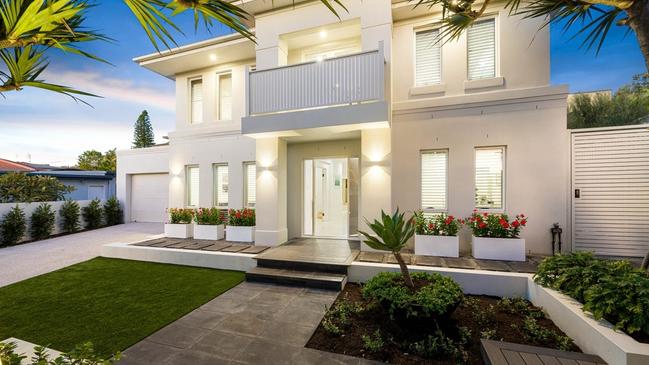
Buddina on the Sunshine Coast topped the charts as Australia’s regional boom suburb over the past decade, with house values up a staggering 234.7 per cent to $1.65 million.
And the lure of a beach life continues, with the suburb recording further price growth of 12.5 per cent since April last year, according to PropTrack.
But as more people cash out, or are priced out, of the region, they are looking beyond to places like Coral Cove in the Wide Bay region, which has posted a whopping 42.2 per cent price growth since the rate hikes began.
It now has a median house value of $700,500, or roughly equivalent to the cost of a one-bedroom unit in Sydney.
Revealed: Queensland’s top 20 regional suburbs for price growth
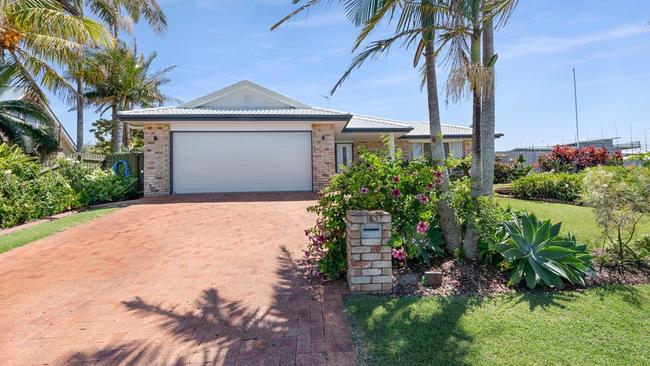
In NSW, Burradoo in the Southern Highlands and Shoalhaven recorded the biggest median price increase in 10 years, up 208 per cent to $2,888,500, with 6.9 per cent growth since rate hikes began, according to PropTrack.
But it is Finley, in the Murray region, where price growth has increased the most since April last year, up 36.2 per cent to $327,000, suggesting that affordability continues to attract new life to bush towns.
PropTrack economist Angus Moore said more affordable regions generally had held up well in spite of falling prices and rising interest rates.
“When you consider how much borrowing capacities have reduced, it is not a surprise that people are looking to these more affordable areas,” he said.
RELATED: Putin helps drive $100k surge in regional NSW prices
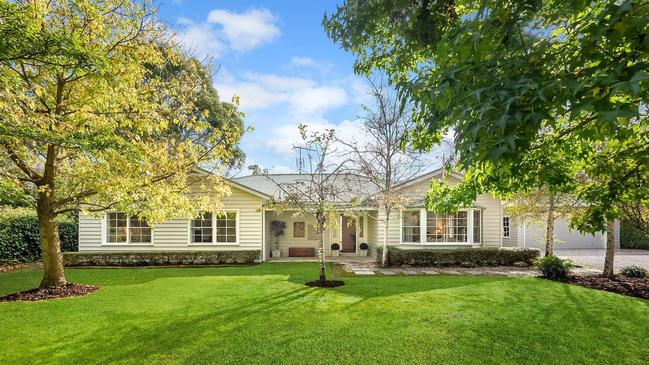
“That will likely lead to further price growth.”
Mr Moore said that while it was difficult to say who was moving to these new affordable hotspots, it was a fair assumption that they were younger buyers.
“They are likely moving into the next phase of their lives and want more space for a growing family,” he said.
“But they can’t afford a 4-bedroom house in Sydney or Melbourne anymore so they are looking elsewhere.”
MORE NEWS: Revealed: Where to find Queensland’s oldest – and youngest – homes
Emotional tale of Matilda’s Sam Kerr and her childhood home
The $1111 bid that broke a Sydney suburb record

Research by the Regional Australia Institute (RAI) showed that the level of migration from capital cities into regional areas dipped slightly in the June quarter, but remained significantly above pre-pandemic levels.
RAI chief economist Dr Kim Houghton said their Regional Movers Index also detected net flows between regional areas.
The biggest areas by number were Sunshine Coast (16 per cent or one-in-eight regional movers), Gold Coast, Greater Geelong, Fraser Coast and Moorabool Shire.
Analysis by Little Hinges also found that the Sunshine Coast was, and still is, a beacon for cashed-up interstate buyers from Sydney and Melbourne, with the Queensland region accounting for 40.3 per cent of all interstate virtual inspections.
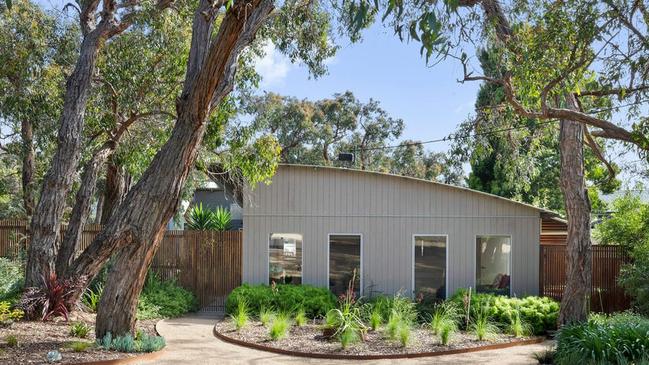
“When we look at where the Sydneysiders is going, it’s interesting – they’re going to Victoria and Queensland, but some of them – about 33 per cent – are also going to regional in New South Wales,” Dr Houghton said.
“But they’re actually going to places further afield in regional New South Wales, not just those big coastal areas.”
Dr Houghton said there had been a ripple effect in regional Australia as a result of booming prices and lack of available housing in coastal hot spots.

He said milliennials in particular were looking further inland in search of areas offering a better balance of affordability and availability.
Meanwhile, homeowners in Anglesea in the Geelong region in Victoria enjoyed the biggest capital growth over the decade in that state, up 220 per cent to $1.76 million.
But it is Orbost (Latrobe-Gippsland) that recorded the biggest leap in values since the RBA’s assault on mortgageholders began, up 30.8 per cent to $340,000.
Over in South Australia, six of its top 20 regions recorded price growth north of 100 per cent.
Top of that list was Millicent, where median house values have grown 119.8 per cent since 2013 to reach $338,500.
MORE: Melbourne growing pains leads exodus to regions

Since rates began to rise, houses in the Limestone Coast suburb have soared 32.7 per cent, with lifestyle and affordability attracting seachangers to the 5000-strong community.
But it is Peterborough, a historic railway town, that is seeing an influx of new money, with the median house price rising 45.4 per cent to $141,000 in just 15 months.
A decade ago, the average house in Peterborough cost around $90,000, with the town seeing 119.7 per cent growth since the start of the pandemic alone.
In Tasmania, “closing the moat” did little to stop eye-watering price growth in its property market, with Queenstown recording a 207.7 per cent increase in values since 2013, with most of that during the pandemic boom.
But with a median house value of $200,000, it is little wonder the historic mining town has recorded further price growth of 25 per cent since rate hikes started.
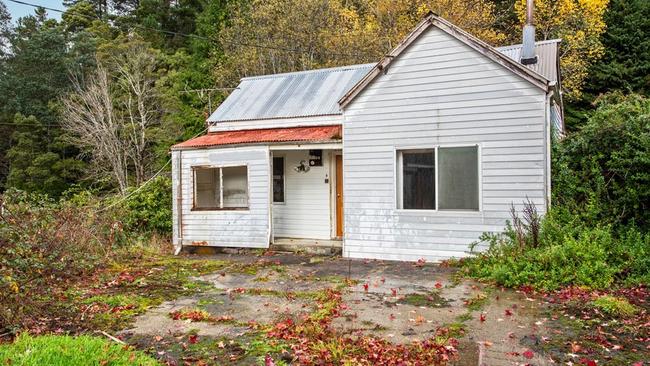
RELATED: The SA regions house buyers can’t get enough of
Over in Australia’s biggest state, the Bunbury region in Western Australia had the most top growth suburbs, but it was Lower Chittering in the Wheat Belt where values have soared the most over the decade.
There, house values have increased a whopping 227.6 per cent to $850,000, with 4.1 per cent of that since the interest rates blowout.
But now West Busselton leads the charge for growth, with 28.3 per cent growth to $680,000 since April last year.
In the Northern Territory, the top performer for the decade was East Side (up 25.3%) but now Katherine East is out in front with 24.6 per cent growth in 12 months.
Commonwealth Bank executive general manager of regional and agribusiness banking Paul Fowler said the housing availability across regional Australia continues to be relevant to growth and population growth.
“It’s incredibly important we continue to foster the right environment to allow residential construction to proceed to be able to build the houses to attract people to fill the jobs and to allow communities to continue to grow,” he said
“As we know, we operate in the current economic environment where cost of living pressures are real for many Australians.
“That affordability angle continues to play a role we think in terms of the continuation of this regional migration trend.”
Mr Fowler said there was not only a need to invest in more housing, but social infrastructure such as schools, health care, aged care, retail services to ensure the communities could thrive.
Hotspotting founder Terry Ryder said regional areas would benefit from new, younger residents moving in, but only if politicians and bureaucrats planned ahead.
He said the key to growth in the regions was “a long term plan, not 4-year political cycles”.
“Unfortunately, we have politicians who either don’t get it or are only interested in short term voter appeal rather than fixing the problems that affect peoples lives,” he said.
“None seem to have any real smart or coherent solutions to problems like housing and infrastructure, which is key to growth in the regions.”
MORE: How bank watchdog helped create rental crisis
More Coverage
Originally published as Where regional home prices have soared since interest rates hit overdrive
Read related topics:Cost of Living




